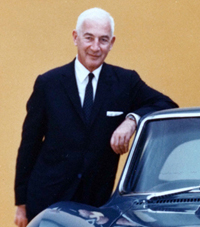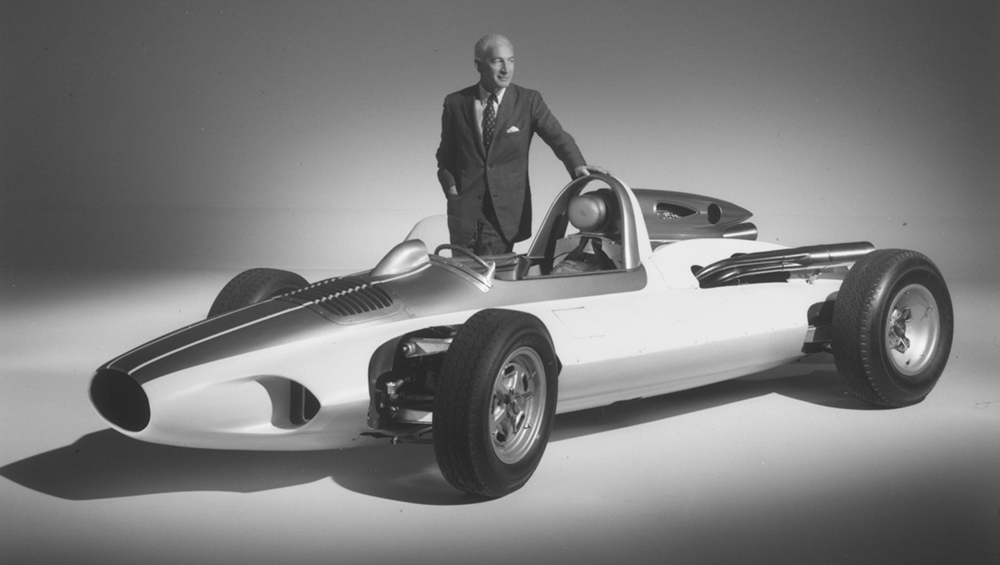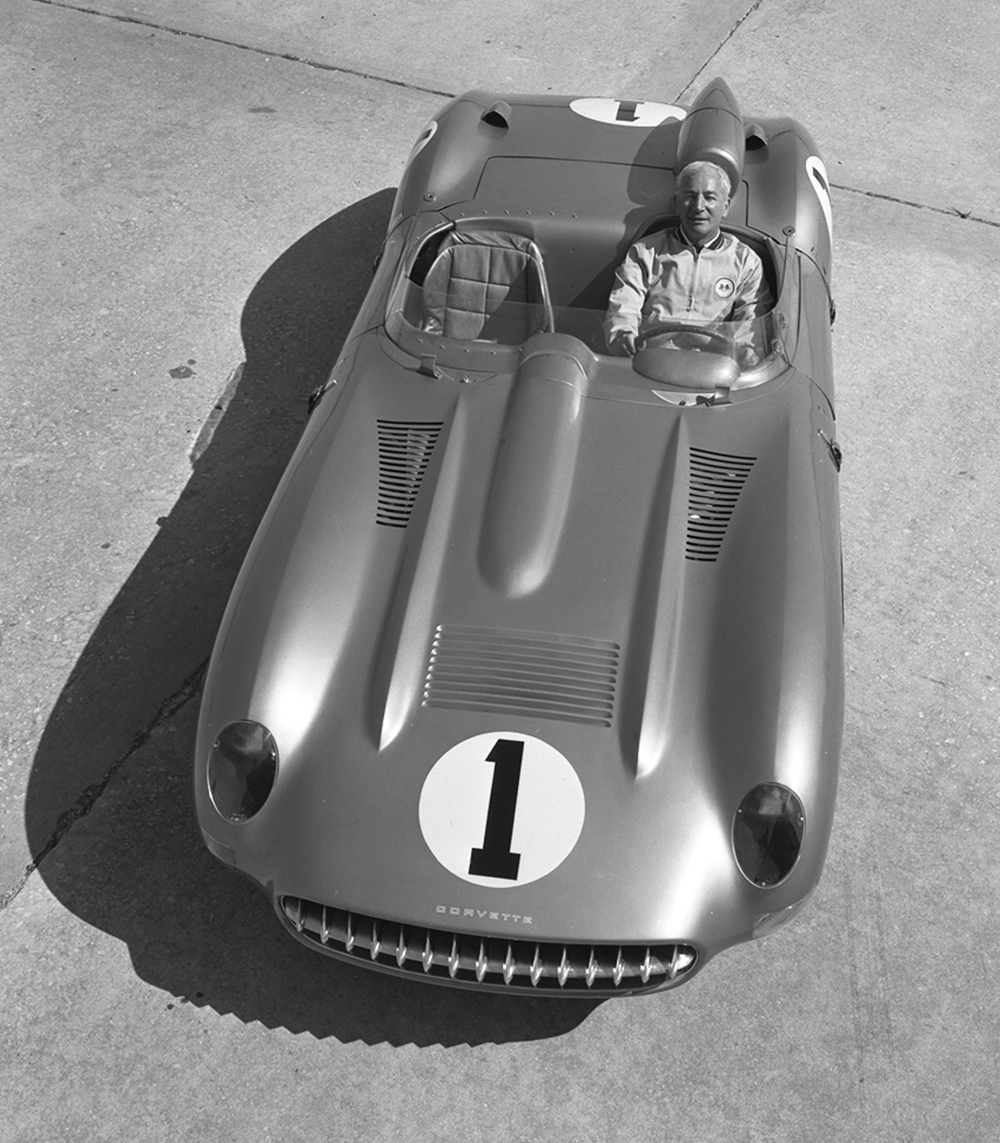
Zora Arkus-Duntov (December 1909 – April 1996) was a Belgian-born American engineer. His work on the Chevrolet Corvette earned him the nickname “Father of the Corvette. Zora joined General Motors in 1953 after seeing the Motorama Corvette on display in New York. Zora found the car to be visually superb, but was disappointed with what was underneath. He wrote Chevrolet chief engineer Ed Cole that it would be his complement to work on such a beautiful car, he also included a technical paper which proposed an analytical method of determining a car’s top speed. Chevrolet was so impressed that engineer Maurice Olley invited him to come to Detroit. On May 1, 1953, Zora Arkus-Duntov started at Chevrolet as an assistant staff engineer. Shortly after going to work for Chevrolet, Zora set the tone for what he was about to accomplish in a memo to his bosses. The document, entitled, “Thoughts Pertaining to Youth, Hot Rodders and Chevrolet”, laid the foundation for the strategy that Chevrolet used to create the successful performance parts programs.
Zora became director of high performance at Chevrolet and helped to transform the Corvette from a docile roadster into a formidable sports car that challenged Porsche, Ferrari, Maserati, and Mercedes-Benz. After helping to introduce the small-block V8 engine to the Corvette in 1955, providing the car with the much needed power, he set about showcasing the engine by ascending Pikes Peak in 1956 in a pre-production prototype Chevy, setting a stock car record. Not satisfied, he took a Corvette to Daytona Beach the same year and hit a record setting 150 mph over the flying mile. In his spare time, the brilliant and vocal GM driver/engineer also developed the famous Duntov high-lift camshaft and helped bring fuel injection to the Corvette in 1957.
In 1963, Zora launched the Grand Sport program. The idea was to create a special lightweight Corvette weighing only 1,800 pounds and race it on an international circuit against not only Cobras and other GT-Class cars, but also racing only prototypes from Ferrari, Ford and Porsche. Power for the Grand Sport was to come from an aluminum version of the small block V8, equipped with special twin spark plug cylinder heads. At 377ci, output was a projected 550 hp at 6,400 rpm. But as it had so often, GM policy prohibited Zora from going racing, but not before five Grand Sports were built. The five Grand Sports eventually fell into the hands of private owners, and Zora was able to support them in spite of the official ban. Zora retired in 1975
When Zora Arkus-Duntov arrived at GM in May 1953, he had an agenda: to make the Corvette the performer he knew it could be. Arkus-Duntov first saw the Corvette at the 1953 Motorama in New York City, and it so inspired him that he wrote a letter to Ed Cole, sharing his desire to work on the car. His vision, energy and determination shaped the early years of the Corvette legend, and that spirit continues to drive the destiny of the sport coupe even today.
In 1956, an Arkus-Duntov camshaft, mated to Cole’s small-block V8, boosted horsepower from 195 to 240, and Arkus-Duntov set a record behind the wheel of this Corvette, doing the Daytona Flying Mile at 150.583 mph. He also set a stock car record when he raced up Pikes Peak in 1956 in a pre-production prototype Chevy. In 1963, Zora launched the legendary Grand Sport program. The idea was to create a special lightweight Corvette weighing only 1,800 pounds and race it on an international circuit.
By 1968, he’d become chief engineer of Corvette, and helped introduce technology such as disc brakes, independent rear suspension and limited-slip differential. He developed the famous Duntov high-lift camshaft and helped bring fuel injection to the Corvette in 1957. He also pioneered the CERV experimental research vehicles, a moniker still in use today.
Yet his life in America was just a fraction of the Zora story. Born in Belgium on Christmas Day in 1909, he graduated from the Institute of Charlottenburg in 1934, and started writing engineering papers for a German publication. In 1939 he married Elfi Wolff, a German native who danced with the Folies-Begère. They later escaped Europe when France surrendered, with Elfi piloting an MG, Nazi troops in close pursuit, and Zora cloistered in a bordello until the danger subsided. Several days later they set sail for New York. There, Arkus-Duntov and his brother, Yura, started a business that manufactured parts for Ford and the military. Later, he worked on the Allard sports car in England, co-driving it at Le Mans in ’52 and in ’53, and then winning class victories at Le Mans in 1954 and 1955 in a 1100cc Porsche Spyder.
Arkus-Duntov retired from GM in 1975, but remained intimately connected to the Corvette culture until his death, just months before the 1997 launch of the fifth-generation model. He was a fixture at most of the major Corvette gatherings, shows and events, and was always accessible to the car’s many loyal owners.
“The one impression I’ll cherish is the warmth,” said John Cafaro, chief designer for the fifth-generation Corvette. “Zora was held in such high esteem in Corvette and automotive circles. Yet, he’d sit there for hours and hours signing autographs. He always had time to devote to Corvette lovers.” Passionate, opinionated and brilliant, it’s fair to say the Corvette’s soul will always belong to Zora.
Zachary “Zora” Arkus-Duntov was a Russian and American engineer whose work on the Chevrolet Corvette earned him the nickname “Father of the Corvette. Born: December 25, 1909, Died: April 21, 1996.



You must be logged in to post a comment.